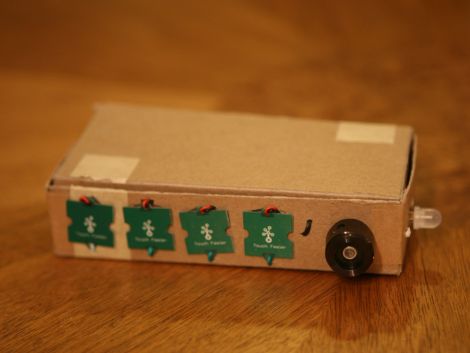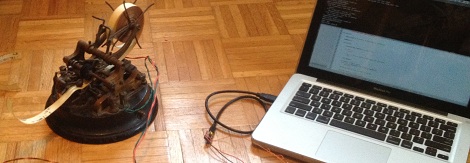
[Andrew] recently got the authorization to install Linux on his work PC, and he was looking for a way to control his music without relying on keyboard shortcuts to do so. Additionally, he wanted an unmistakable visual cue when he received messages in Pidgin, so he decided to build an external input/notification box.
The control box, quite literally, is a cardboard box in which [Andrew] crammed some components he got way back when from the crew at Seeed Studio. A Seeeduino serves as the brains of his control panel, interfacing with his PC over USB. He uses a set of 4 touch sensors and a potentiometer to control the MPD, allowing him to easily switch tracks, pause his music, control the volume, and lock his computer with a simple touch. A side-mounted RGB LED lights green to show that the system has received his commands successfully, pulsing a bright blue whenever a message arrives via Pidgin.
While the case isn’t exactly pretty, it is small, recycled, and takes up very little desk space. [Andrew] says that it works great, and he has made his code available on github if anyone is interested in using it.











